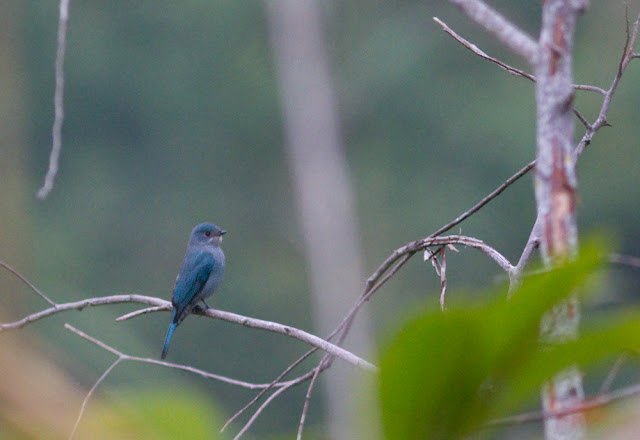 |
| 24/3 Kangerslussuaq. Darker overall impression with the flanks stripes being broader and more |
 |
| 24/3 Kangerslussuaq. The undertail coverts. I did not see any clear cut hornemanni with more than one black stripe in the undertail coverts |
RDN
 |
| 24/3 Kangerslussuaq. Darker overall impression with the flanks stripes being broader and more |
 |
| 24/3 Kangerslussuaq. The undertail coverts. I did not see any clear cut hornemanni with more than one black stripe in the undertail coverts |
 |
| 24/3 Kangerslussuaq. When flying they appear "much" larger than their european counterparts. |
 |
| 24/3 Kangerslussuaq. The chinese look. |
 |
| 24/3 Kangerslussuaq. Birds were actively feeding in the cold weather (-12 degrees). |
 |
| 24/3 Kangerslussuaq |
 |
| 24/3 Kangerslussuaq |
 |
| 3/4 Maniitsoq. Clearly one of the larger gulls. Dark tail band, blackish outer primaries and large bill. |
 |
| 3/4 Maniitsoq. I think the wings give a Glaucous-like impression. |
 |
| Velvet Scoter. Common on the trip. |
 |
| Velvet Scoter. Common on the trip. |
 |
| Yellow-billed Loon (2cy) Big birds with long necks! |
 |
| Yellow-billed Loon (adult summer plumage). One of the coolest birds in the world! |
 |
| Two birds together! Still Yellow-billed Loon. We found nine birds close together in a very little area. Amazing! |
 |
| 3cy bird or adult? |
 |
| 3/4 Maniitsoq, a fantastic bird. |
 |
| 3/4 Maniitsoq. This bird was mainly seen feeding alone only rarely associating with Common Eiders. |
 |
| 3/4 Maniitsoq |
 |
| 3/4 Maniitsoq |
 |
| 3/4 Maniitsoq |
 |
| 3/4 Maniitsoq |
 |
| 3/4 Maniitsoq. If seen well adult male King Eiders are easily picked out in flocks of Common Eiders |
 |
| 3/4 Maniitsoq. Smaller size, darker general appearance, big white ovals on the upper wings and much smaller head/shorter neck. Hopefully this sight will be possible in Aarhus Bay one day! |
 |
| 3/4 Maniitsoq, Greenland. |
 |
| 3/4 Maniitsoq, Greenland. |
 |
| 3/4 Maniitsoq, Greenland. |
 |
| 3/4 Maniitsoq, Greenland. |
 |
| 3/4 Maniitsoq, Greenland. |
 |
| 3/4 Maniitsoq, Greenland. |
 |
| 3/4 Maniitsoq, Greenland. |
 |
| 10/3 Indiana Jones (KO) og Hr. Lund nyder Gummistøvlens historier fra de varme lande. |
 |
| 11/3 Vi prøvede forgæves at fodre anden med toastbrød, hvilket desværre ikke virkede |
 |
| 11/3. Mandarinænder er forholdsvis sjældne i Aarhus området, dog holdt en undsluppen fugl til på nordsiden af Årslev Engsø i flere år. Denne er dog ikke set i adskillige år. |
 |
| 11/3 Aarhus Centralhavn |
 |
| King's Project. Vi brugte ikke meget tid her, men så et par rigtig gode arter på lokaliteten (White-tailed Robin, Black-breasted Thrush og Scaly Thrush) |
 |
| Det kendte drossel-sted bag ved restauranten. Her sås Scaly Thrush på helt tæt hold. |
 |
| Nit og RDN. Nit var overraskende god til at finde fuglene, og uden hende var vi helt sikkert gået glip af flere gode arter. |
 |
| Giant Nuthatch er en af stjernerne ved Doi Ang Kang. Vi så og hørte to fugle i en times tid på lokaliteten. Foto: RDN |
 |
| Vi faldt tilfældigt over en lille gruppe af denne fede art af Parrotbill (Spot-breasted). Foto:RDN |
 |
| Blue-winged Minla er forholdsvis alm. i det nordlige Thailand. Foto:RDN |
 |
| White-tailed Robin er virkelig en drømmeart, og ved King's Project kunne vi nyde denne fugl på helt tæt hold. Stedet var et åben skjul og fuglene reagerede på plastikposer! Foto:RDN |
 |
| Black-breasted Thrush. Endnu en "stjerne" fra skjulet. Foto:RDN |
 |
| Denne Yellow-streaked Warbler blev set ved Chinese Cemetary på toppen af Doi Ang Kang. Foto:SSL |
 |
| Yellow-bellied Flowerpecker ved King's Project. Foto: SSL |
 |
| White-tailed Robin Foto: SSL |
 |
| Spot-breasted Parrotbill. Eksklusiv art fra Doi Ang Kang Foto:SSL |
 |
| Scarlet Minivet fra det nordlige Thailand. Foto:SSL |
 |
| Scaly Thrush ved King's Project. Endnu en drømmeart! Foto: SSL |
 |
| Pale Blue Flycatcher. Vi så kun to individer på hele vores tur. Foto: SSL |
 |
| Hill Prinia ved Chinese Cemetary Foto: SSL |
 |
| Oriental White-eye at King's Project. Foto:SSL |
 |
| Stemningsbillede af Giant Nuthatch. Et meget stemningsfyldt øjeblik. Foto: SSL |
 |
| En af mange Little Bunting ved Chinese Cemetary (20+) Foto: SSL |
 |
| Endnu en Daurian Redstart fra Doi Ang Kang Foto: SSL |
 |
| Brown-breasted Bulbul. Endnu en nordlig art fra Doi Ang Kang. Alm. på lokaliteten. Foto: SSL |
 |
| Black Bulbul af den hvidhovede race stresemanni Foto:SSL |
 |
| Black-breasted Thrush på klos hold! Foto: SSL |